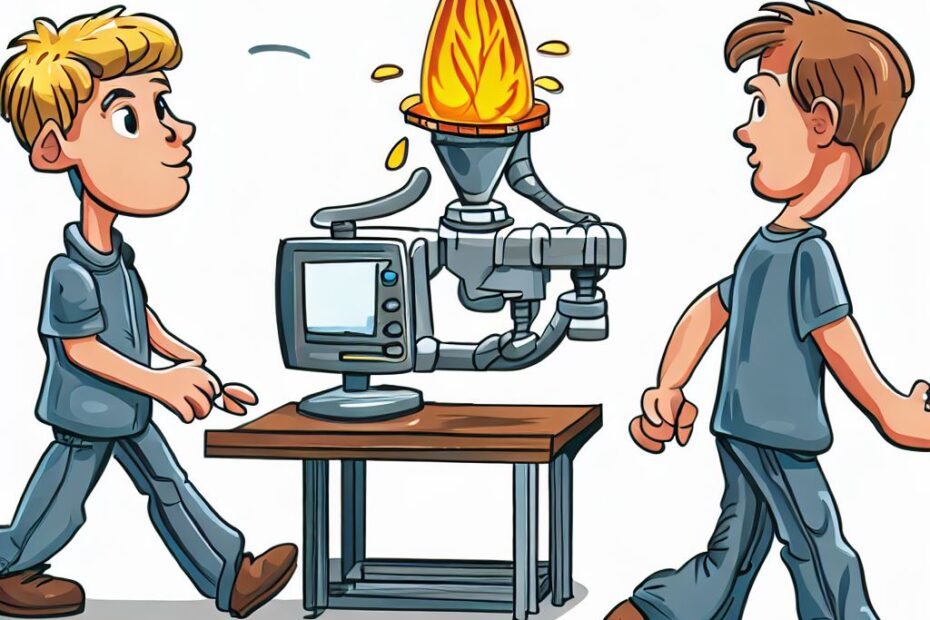How to go from prototype to production? Going from the ideation stage to the production phase is a crucial step in turning your concept into a successful product. Whether you’re an entrepreneur, inventor, or part of an innovative team, understanding the process of transitioning from a prototype to production is essential for achieving your goals. In this comprehensive guide, we’ll provide you with actionable steps and insights to help you navigate this critical phase successfully.
1 – Understanding the Prototype
Prior to embarking on the production stage, it is of utmost importance to ascertain that you possess a meticulously developed and rigorously tested prototype. A prototype functions as an exemplification of your concept, providing a platform to comprehensively assess its feasibility and functionality. This pivotal stride aids in the identification and rectification of potential design flaws, optimization of performance, and the invaluable collection of feedback.
By investing time and effort in constructing a well-crafted prototype, you lay the foundation for a successful transition to the production phase. This initial rendition of your product allows you to visually and tangibly grasp its potential, gauging its ability to meet the desired objectives.
The examination of a prototype proves instrumental in determining its viability and addressing any imperfections before the costly scale-up to production commences. By subjecting your prototype to rigorous testing, analysis, and evaluation, you can unravel essential insights that guide further refinements towards achieving an optimal end result.
Furthermore, the feedback garnered during this stage serves as a critical resource in shaping and enhancing the product’s design, features, and user experience. By engaging with potential end-users, design experts, and engineers, you gain invaluable perspectives that help ensure the eventual product resonates with its intended audience.
The thorough understanding and appreciation of the prototype not only lay the groundwork for a seamless transition to production but also set the stage for a superior end product that meets objectives, satisfies user needs, and presents an excellent market fit.

2 – Refining the Design
In order to facilitate a seamless progression to the production phase, it is imperative to undertake the process of refining your prototype’s design, taking into account feedback received and rigorous testing conducted. Embracing collaboration with design experts, engineers, and even potential end-users becomes pivotal as you aspire to augment the product in terms of its features, usability, and aesthetic appeal. By dedicating effort to iterative improvements during this stage, you establish a sturdy groundwork that paves the way for a triumph in the production domain.
Engaging in an ongoing discourse with design experts enables you to tap into their wealth of knowledge and experience, refining the visual aspects of your prototype and ensuring its design aligns harmoniously with your desired objectives. Their expertise coupled with your own vision creates a synergy that produces an exceptional end product.
Close collaboration with engineers during the refinement process facilitates the incorporation of technical considerations and optimizations. Their insights aid in improving the functionality and performance of the prototype, making it more resilient, efficient, and user-friendly. By merging the realms of design and engineering, you achieve a harmonious balance that optimizes both form and function.
Additionally, involving potential end-users in the design refinement phase allows you to glean valuable firsthand perspectives. Their feedback and input provide critical insights into the usability and user experience aspects of the product. By empathetically listening to their needs and preferences, you can tailor the design to create a seamless and intuitive user interaction, ultimately resulting in higher customer satisfaction and adoption.
Through the continuous process of iterative improvements, you build upon the strengths and address the weaknesses of the prototype. This relentless pursuit of refinement enhances the overall quality of the design and ensures that the product is primed for success in the production phase.
Refining the design of your prototype serves as an essential step to facilitate a smooth transition to production. By leveraging the expertise of design professionals, collaborating with engineers, and integrating feedback from potential end-users, you can enhance the product’s features, usability, and aesthetics. This iterative refinement process strengthens the foundation for a successful production phase, ultimately culminating in the creation of an outstanding end product.
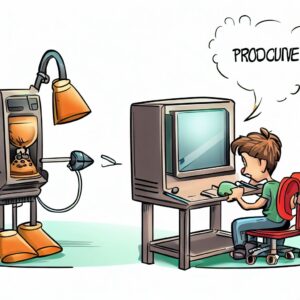
3 – Preparing for Production
a) Establishing a Manufacturing Plan
Developing a comprehensive manufacturing plan is vital to streamline the production process. Consider factors such as cost, materials, equipment, quality control, and timeline. Create a detailed checklist to ensure all necessary components are in place.
When embarking on the manufacturing journey, it’s important to lay a strong foundation by establishing a comprehensive manufacturing plan. This plan acts as a roadmap, guiding you through the production process and ensuring efficient resource utilization. Taking into account various factors such as cost, materials, equipment, quality control, and timeline is essential for a successful manufacturing endeavor.
The first step in creating a manufacturing plan is to carefully assess the costs associated with production. This includes not only the direct expenses related to materials and equipment but also indirect costs such as labor, overhead, and maintenance. By conducting a thorough cost analysis, you can make informed decisions and allocate resources effectively, maximizing profitability while maintaining product affordability.
Materials are another critical aspect to consider in the manufacturing plan. Identifying the required materials and establishing solid relationships with suppliers ensures a smooth flow of resources throughout the production process. It’s important to evaluate the quality, availability, and sustainability of the materials to maintain consistency and meet customer expectations.
Selecting suitable equipment is crucial for efficient and reliable production. Analyze the specific requirements of your manufacturing process and invest in machinery that aligns with your needs. Considering factors such as capacity, scalability, maintenance requirements, and technological advancements allows you to make informed decisions that support long-term success.
Incorporating stringent quality control measures into your manufacturing plan is essential to deliver products that meet or exceed customer expectations. Define quality standards, establish rigorous inspection procedures, and implement corrective actions to ensure consistent product excellence. By prioritizing quality, you enhance customer satisfaction, minimize returns or recalls, and safeguard your brand reputation.
Creating a detailed checklist serves as a valuable tool to track progress and ensure that all necessary components are in place. It helps you maintain organization, avoid overlooking critical steps, and stay on schedule. Regularly review and update the checklist as the manufacturing plan evolves to accommodate any changes or optimizations that arise during the production process.
A well-developed manufacturing plan lays the groundwork for a successful production process. By considering factors such as cost, materials, equipment, quality control, and timeline, and creating a detailed checklist, you can streamline operations, optimize resource allocation, and ultimately deliver high-quality products efficiently. Embracing a systematic approach from the start sets the stage for a smooth and productive manufacturing journey.
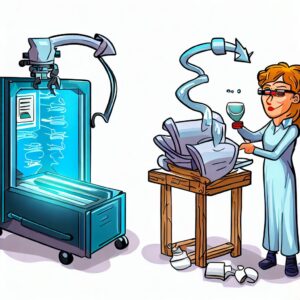
b) Sourcing Reliable Suppliers
Identify and establish partnerships with reliable suppliers who can provide the required raw materials, components, and equipment. Conduct thorough research and due diligence to ensure they meet your quality standards, have a solid track record, and can deliver on time.
When it comes to sourcing suppliers for your manufacturing project, it is crucial to identify and establish partnerships with reliable entities. Choosing the right suppliers lays the foundation for a smooth production process, ensuring timely delivery of high-quality raw materials, components, and equipment.
To begin with, conduct thorough research to identify potential suppliers who offer the necessary resources for your manufacturing needs. Utilize various resources such as industry directories, trade shows, and online platforms to compile a list of potential candidates.
Once you have compiled a list, it’s important to perform due diligence on each prospective supplier. Assess their reputation, experience, and track record within the industry. Look for suppliers who have a history of delivering quality products and maintaining consistent performance. Online reviews, testimonials, and industry certifications can provide valuable insights into a supplier’s reliability and reputation.
In addition to assessing their reliability, it is crucial to evaluate a supplier’s ability to meet your specific requirements. Take into account factors such as production capacity, lead times, and the supplier’s responsiveness to inquiries and orders. Request samples or conduct site visits to ensure that the materials or components meet your desired quality standards.
Furthermore, open and transparent communication is essential throughout the supplier selection process. Engage in discussions to understand their production processes, quality control measures, and any potential challenges they may face. A supplier who actively communicates and collaborates with you will contribute to a stronger and more efficient partnership.
Finally, ensure that the selected suppliers have a proven track record of delivering products on time. Late deliveries can disrupt your production schedule and negatively impact customer satisfaction. Request references from their existing clients and inquire about their reliability in terms of meeting deadlines.
By sourcing reliable suppliers is a critical step in the manufacturing process. By conducting thorough research, performing due diligence, evaluating their ability to meet your quality standards and deadlines, you can establish strong partnerships that contribute to the success of your project. Remember, investing time and effort in sourcing reliable suppliers sets the stage for smooth production and ensures the timely delivery of high-quality materials and components.

c) Developing a Production Timeline
Creating a well-defined production timeline helps you stay organized and meet deadlines effectively. Break down the process into manageable stages, considering factors like manufacturing, assembly, packaging, and quality control. This timeline will serve as a blueprint for smooth execution.
When embarking on a manufacturing project, developing a clear and comprehensive production timeline is essential for maintaining organization and ensuring timely completion. By breaking down the entire process into manageable stages and considering key factors such as manufacturing, assembly, packaging, and quality control, you can create a roadmap that guides the smooth execution of your project.
To begin, take a holistic view of your production process and identify the primary stages involved. Consider various factors such as the complexity of manufacturing, required assembly tasks, packaging requirements, and quality control checkpoints. By segmenting the process, you can effectively allocate resources and set realistic deadlines for each stage.
Next, assign specific timelines and deadlines for each stage, taking into account the interdependencies and potential bottlenecks. Ensure that these timelines are feasible, allowing sufficient time for each task without compromising the overall project deadline. It is crucial to consider factors such as production capacity, lead times for raw materials or components, and any potential delays that may arise.
In addition to setting deadlines, consider incorporating buffers or contingency plans into your timeline. Unexpected challenges or delays may arise during the course of production, and having contingency plans in place will help mitigate the impact on overall timelines. This flexibility allows you to proactively address issues and make necessary adjustments without derailing the entire project.
Furthermore, communicate the production timeline clearly to all stakeholders involved, including your team, suppliers, and clients. This ensures that everyone has a shared understanding of the project timeline and their respective responsibilities. Transparent communication fosters collaboration and helps manage expectations throughout the production process.
Regularly monitor and track the progress against the production timeline. This allows you to identify any discrepancies or delays early on and take appropriate corrective actions. Continuously evaluate the timeline’s effectiveness and make adjustments as necessary to optimize efficiency and meet deadlines effectively.
By developing a well-defined production timeline is crucial for effective project management. By breaking down the process into manageable stages, assigning realistic deadlines, considering potential contingencies, and fostering transparent communication, you create a blueprint for smooth execution and successful completion of your manufacturing project.
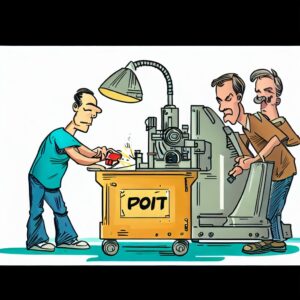
4 – Prototyping to Production Scale
a) Small Batch Production
Consider starting with small-batch production runs to validate your design improvements and identify any production challenges before scaling up. This approach allows for adjustments while minimizing the risk of costly mistakes.
When embarking on the production journey, it is wise to adopt a small-batch production approach that can yield significant benefits. By initiating with small-scale production runs, you can validate your design improvements and pinpoint any potential production challenges before ramping up production volume. This method empowers you to make timely adjustments and refinements, significantly reducing the risk of costly errors or setbacks.
The advantages of small batch production can be manifold. Firstly, it allows you to conduct thorough testing and verification of your design changes in a controlled and manageable production environment. This hands-on experience gives you valuable insights into the practical implementation of your design improvements, enabling you to identify and rectify any issues or bottlenecks that may arise.
Moreover, small-batch production provides an opportunity for incremental adjustments and fine-tuning, ensuring that your final product meets the desired specifications and quality standards. It enables you to gather critical feedback from customers, stakeholders, or even your internal team, facilitating continuous improvement as you move forward.
By minimizing the scale of production, you also mitigate the potential risks associated with unforeseen challenges or errors. If any issues arise during small-batch production, they can be addressed promptly and cost-effectively, preventing them from escalating into larger, more expensive problems when scaling up to full production.
Additionally, small-batch production helps you optimize resource allocation and manage costs efficiently. It reduces the need for excessive inventory or excess waste, as you can focus on producing the quantity needed for testing, evaluation, and market validation. This lean approach allows you to preserve resources while staying agile and responsive to changes in market demand or feedback from customers.
Embracing the strategy of small-batch production offers numerous advantages. It allows you to validate design improvements, overcome production challenges, make necessary adjustments, and minimize the risk of expensive mistakes. By adopting this approach, you can navigate the production process more efficiently, ensuring that your final product meets or exceeds customer expectations while positioning yourself for future growth and success.
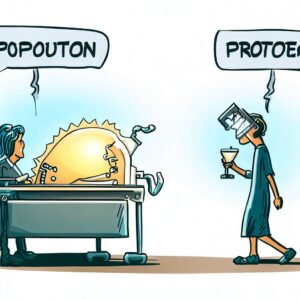
b) Tooling and Manufacturing Process
Collaborate with manufacturers to finalize the tooling and production processes. They will leverage your refined prototype to manufacture products at scale. Regular communication and periodic quality checks during this phase are essential to ensure adherence to specifications.
When it comes to tooling and manufacturing processes, establishing a strong collaboration with experienced manufacturers is crucial. By working closely together, you can refine and fine-tune the tooling and production processes necessary to bring your design to life on a larger scale. Leveraging your refined prototype, manufacturers will employ their expertise to streamline operations and ensure efficient production.
Open and regular communication between you and the manufacturers is paramount in this phase. It facilitates a clear understanding of your requirements and enables manufacturers to provide valuable insights and suggestions to optimize the tooling and production processes. By maintaining a collaborative relationship, you can resolve any challenges that arise promptly and effectively, minimizing disruptions and ensuring the smooth flow of production.
Periodic quality checks should be an integral part of this process. By conducting regular assessments, you can verify that the manufactured products adhere to the desired specifications and meet your quality standards. This proactive approach allows you to catch any deviations or inconsistencies early on, enabling corrective measures to be implemented promptly.
Additionally, implementing clear and well-documented specifications for the manufacturing process is essential. This helps both parties align their expectations and ensures that the final products meet the agreed-upon standards. Continuous monitoring and feedback loops throughout the production phase allow for adjustments as needed, ensuring consistent quality and minimizing the likelihood of costly reworks or delays.
By collaborating closely with manufacturers, you can benefit from their expertise and leverage their production capabilities, ultimately leading to a successful scaled-up production. Their insights and experience can contribute to improving the efficiency, accuracy, and cost-effectiveness of the manufacturing processes.
Establishing a strong partnership with manufacturers during the tooling and manufacturing process is key to realizing your design at scale. Regular communication, periodic quality checks, and adherence to specifications are vital elements in ensuring a successful outcome. By nurturing this collaboration, you can navigate the manufacturing phase seamlessly and achieve high-quality products that meet or exceed your expectations.

5 – Quality Control and Testing
Securing the quality and functionality of your product stands paramount in guaranteeing utmost customer satisfaction. To achieve this, it becomes imperative to establish robust quality control measures that span across the entire production process. Additionally, conducting comprehensive testing at every stage allows for the prompt detection of any potential issues, enabling timely adjustments and necessary refinements. It is essential to ensure that the verification and validation protocols seamlessly align with industry standards and regulations, further enhancing the credibility and reliability of your product.
By implementing stringent quality control measures, you instill a culture of excellence in every aspect of the production process. This involves employing rigorous inspections, assessments, and audits to meticulously examine the materials, components, and manufacturing stages to ensure adherence to the highest standards. Implementing comprehensive quality control leads to a reduction in defects, improved reliability, and enhanced customer trust.
Thorough testing at each stage acts as a vital checkpoint to identify any shortcomings or discrepancies. By subjecting the product to rigorous examination, you gain valuable insights into its performance, functionality, and reliability. This enables prompt intervention and necessary adjustments to rectify any issues before they impact the final product. Testing also provides an opportunity to gauge the product’s compatibility with different operating conditions, ensuring its robustness and durability.
To ensure the effectiveness of quality control and testing, it is crucial to align the verification and validation protocols with industry standards and regulations. Adhering to these guidelines not only enhances the product’s credibility but also safeguards against potential legal and compliance issues. Compliance with industry standards fosters customer confidence and trust in your product, as it demonstrates your commitment to delivering a safe, reliable, and compliant solution.
By implementing rigorous quality control measures and conducting thorough testing at each stage, you solidify your product’s quality and functionality. Adhering to industry standards and regulations further bolsters the credibility of your product, instilling customer trust and satisfaction. Embracing these best practices throughout the production process ensures that your product meets or surpasses the expectations of your customers, thereby establishing a strong foundation for success in the market.
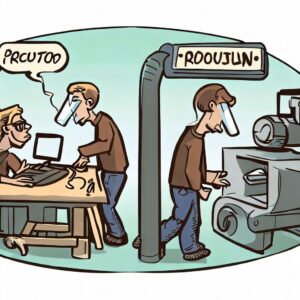
6 – Compliance and Certifications
In today’s highly regulated business landscape, it is essential to understand that regulatory compliance and obtaining certifications may be crucial, depending on the nature of your product. These certifications play a vital role in authenticating the safety, performance, and adherence to specific industry standards. To ensure a seamless certification process, conducting thorough research becomes imperative to identify the applicable regulations and standards that your product needs to comply with. Additionally, it is essential to engage the expertise of professionals who can efficiently navigate the certification process and guide you through the intricacies involved.
Thorough research is the foundation for a successful certification journey. By dedicating time and resources to understand the regulatory landscape, you gain valuable insights into the specific requirements that your product must meet. This involves studying industry-specific regulations, guidelines, and standards set forth by regulatory bodies and organizations to verify compliance. Through comprehensive research, you can identify the specific certifications that are relevant to your product and industry.
Navigating the certification process can be complex and challenging without the required expertise. Hence, it is crucial to seek the assistance of professionals who possess in-depth knowledge and experience in obtaining certifications. These experts can guide you through the intricacies of the certification process, recommend the necessary steps to achieve compliance, and assist in preparing the required documentation and evidence. Their expertise ensures a smoother and more efficient certification journey, saving you valuable time and resources.
Furthermore, engaging professionals who specialize in certification processes enhances your chances of success. They possess a thorough understanding of the regulatory requirements specific to your industry and can provide valuable insights and advice on meeting those requirements. Their guidance ensures that you cover all necessary aspects of compliance, increasing the credibility and marketability of your product.
By recognizing the importance of regulatory compliance and certifications, conducting thorough research, and relying on the expertise of professionals, you pave the way for successful certification and compliance efforts. Achieving certifications not only authenticates the safety and performance of your product but also demonstrates your commitment to meeting industry standards. This instills trust in your customers, strengthens your market position, and opens doors to new opportunities for growth and success.
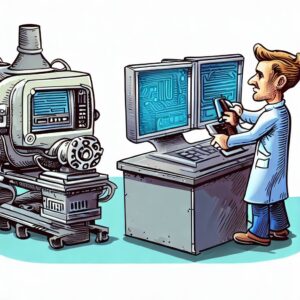
Conclusion
Transitioning from prototype to production is a complex but rewarding journey. By following these steps, you can increase the chances of a successful production process. Remember to stay focused, collaborate with experts, conduct thorough testing, and maintain quality control at every stage. With a well-executed plan and attention to detail, your product can make a significant impact in the market.
